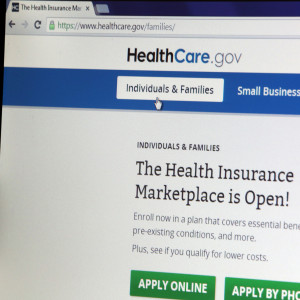The Supreme Court recently approved the provision of subsidies to people who enroll on the federal healthcare exchange known as HealthCare.gov. But last Thursday, in testimony before the Senate Committee on Finance, the nonpartisan Government Accountability Office (GAO) revealed that the biggest threat to implementation of the Affordable Care Act (ACA) remains government ineptitude.
The ACA established health-insurance exchanges or marketplaces for individuals and employers to shop for health plans offered by private insurers. The law directs states to establish exchanges but provides that, if a state doesn’t, the federal government “shall . . . establish and operate such Exchange within the State.” Few states set up their own exchanges. The federal government operates the exchange in 37 states accounting for 76 percent (8.8 million) of the reported 11.7 million people who enrolled in 2015.
The ACA provides for two types of income-based subsidies on the exchanges: a premium tax credit that can be taken in advance in the form of payment to the applicant’s insurer to reduce the applicant’s monthly premium payment, and cost sharing reductions that lower the price enrollees pay for out-of-pocket charges at the time of service for deductibles, co-insurance and copays. The Congressional Budget Office estimates the subsidies will cost $28 billion for fiscal year 2015, rising to $103 billion for fiscal year 2025. Eighty-seven percent of HealthCare.gov enrollees received the tax credit subsidy.
Ensuring that only qualified applicants are approved for coverage and for subsidies is key to limiting federal expenditures. An enrollee must be a U.S. citizen or legal resident residing in the marketplace service area. To qualify for a subsidy, an individual must meet income requirements (between 139–400 percent of the federal poverty level) and must not be eligible for coverage under another qualifying plan—such as affordable, employer-sponsored coverage or a government program, like Medicaid or Medicare. Exchanges are required by law to verify application information to determine eligibility for enrollment and, if applicable, determine eligibility for income-based subsidies.
A year ago, the GAO revealed that it had little difficulty enrolling and obtaining subsidies for fictitious applicants on the federal exchange. GAO created 18 fictitious applicants, some with invalid or nonexistent Social Security numbers and others noncitizens claiming lawful presence in the U.S., who applied for subsidies through federal exchanges in several states via telephone, online, and in-person. Twelve applicants applied online or by phone to test the exchanges’ verification controls. Eleven out of the twelve applicants obtained coverage—the only failed applicant declined to provide a Social Security number and was not allowed to proceed. All 11 of the successful, fictitious applicants received advanced premium tax credits of about $2,500 monthly or about $30,000 annually and obtained eligibility for cost-sharing reduction subsidies.
These results shouldn’t be surprising. The outside document-processing contractor used by the Centers for Medicare and Medicaid (CMS) does not certify authenticity, engage in fraud detection, or use outside sources to confirm submitted documents. It merely confirms that submitted documents are legible and not obviously altered.
GAO also reported it was nearly impossible to access in-person help. The remaining six fictitious applicants, attempted to test income-verification controls by seeking in-person advice on how to report their incomes in order to obtain subsidies. For various reasons, including the service representatives’ inability or unwillingness to help, five of the six couldn’t get assistance. Only one was able to access a service representative, who correctly advised him that his income would not qualify him for a subsidy.
GAO’s new testimony updates the study into the post application period. The exchange requested supplementary documentation for all eleven approved applications. The GAO provided all requested (fictitious) documentation for four, partial fictitious documentation for four, and no documentation for the remaining three. Coverage remained in effect for all eleven approved applicants, even the three who never submitted documentation. In addition to having fictitious documentation approved, in early 2015, two applicants received notices acknowledging receipt of submitted documents that GAO had never sent.
All eleven fictitious applicants who enrolled in 2014 were automatically re-enrolled in January 2015 under a CMS policy that automatically re-enrolls policy holders in the same plan with the same premium tax credit and financial assistance for 2015. A few months later the exchange terminated coverage or subsidies for six applicants citing failure to submit additional documentation in support of new applications that were in fact, never submitted. Five of the six were able to get subsidized coverage reinstated by calling the exchange. In the process, premium tax credit subsidies for these reinstated applicants were increased by a total of more than $1,000 annually despite the fact that no change in subsidies had been requested.
The exchange continued to send misleading and inaccurate information to the enrollees. Four received correspondence referring to the applicants’ federal tax returns even though the fictitious applicants never filed returns. Four received directives to submit additional information or risk loss of coverage by a deadline that had passed months earlier. Finally, the exchange sent three fictitious enrollees a Form 1095-A that misstated the advance premium tax credits they received—mistakes that would have led enrollees to make erroneous claims since they are supposed to report credits received when they file tax returns for the coverage year.
Federal healthcare exchange subsidies may be here to stay, but the GAO has revealed significant problems in how the federal exchange—where the bulk of ACA exchange users are enrolled—screens applicants and awards subsidies. Unless these problems are fixed, fraud, wasted dollars, and bureaucratic incompetence threaten the continued existence of the federal exchange.

